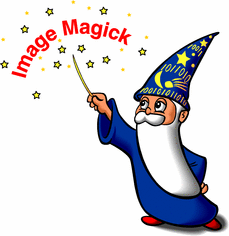

When reading your image, the format is determined implicitedly typically by the first few bytes of the file. However in some cases, the format cannot be determined. This is true for raw image formats such as RGB, GRAY, or CMYK. Typically you will only need to specify an explicit image format for raw images. Otherwise, do not explicitly choose the image format and it will be determined automatically for you.
These formats behave uniquely
gradient
plasma
xc
in that the filename is a color or color range. For example, if you select the plasma format, you might define the filename as
blue-yellow
Or suppose you want a red canvas that is 512 pixels in width and 480 pixels in height. Set Filename to red, Size to 512x480, and Format to xc.
For the pattern format, choose from these patterns (set the filename to one of these names):
bricks
checkerboard
circles
crosshatch30
crosshatch45
crosshatch
fishscales
gray0
gray100
gray10
gray15
gray20
gray25
gray30
gray35
gray40
gray45
gray50
gray55
gray5
gray60
gray65
gray70
gray75
gray80
gray85
gray90
gray95
hexagons
horizontal
horizontalsaw
hs_bdiagonal
hs_cross
hs_diagcross
hs_fdiagonal
hs_horizontal
hs_vertical
left30
left45
leftshingle
octagons
right30
right45
rightshingle
smallfishscales
verticalbricks
verticalleftshingle
vertical
verticalrightshingle
verticalsaw
Two additional formats include a granite texture and the netscape color cube:
granite
netscape
You might want to convert your image to a differing image format. Just select the appropriate format from the scroll list on the Output tool page and press output. For a complete list of image formats supported by ImaegMagick Studio see this page.